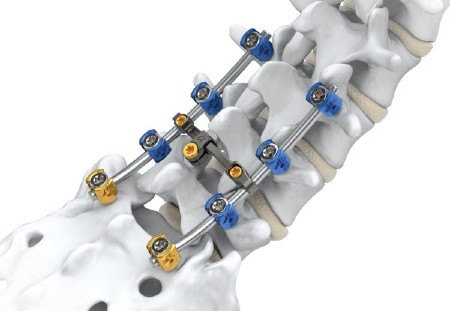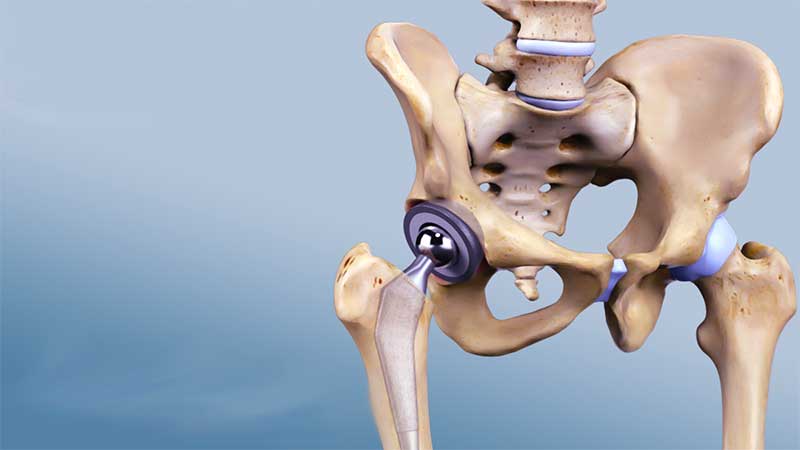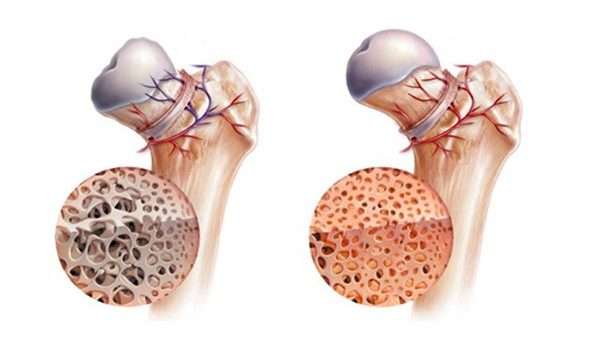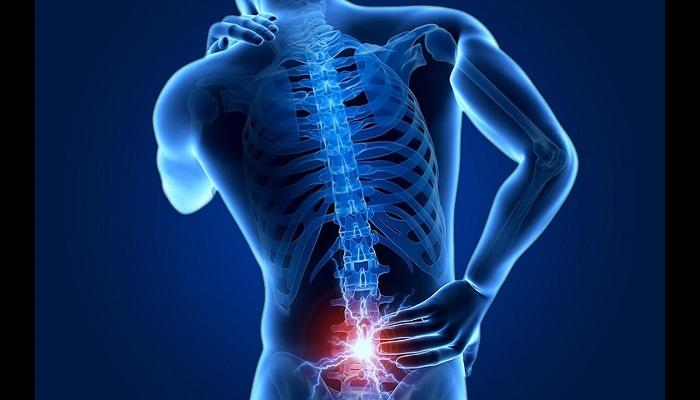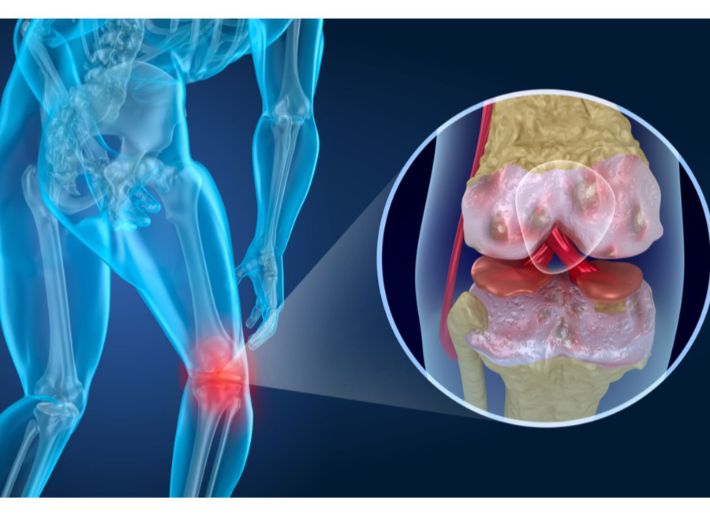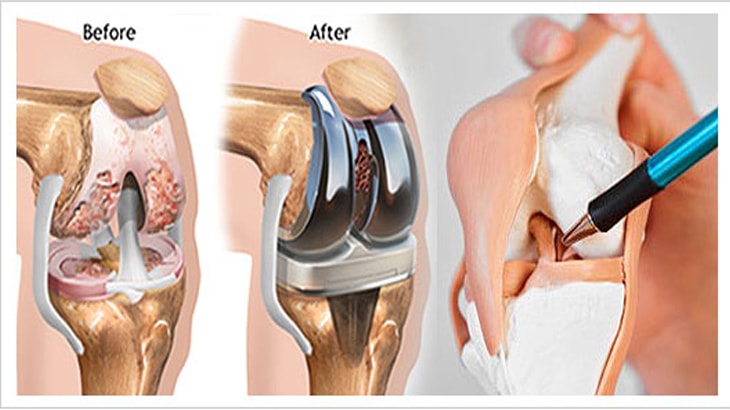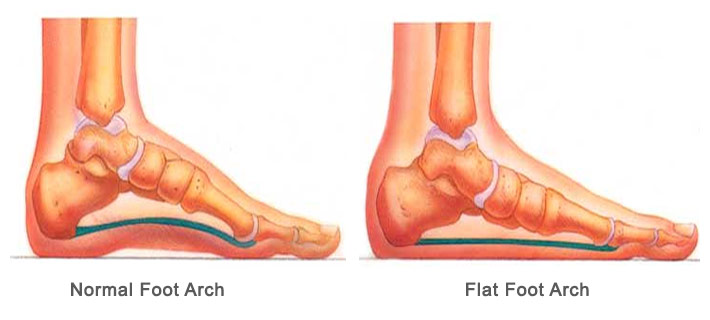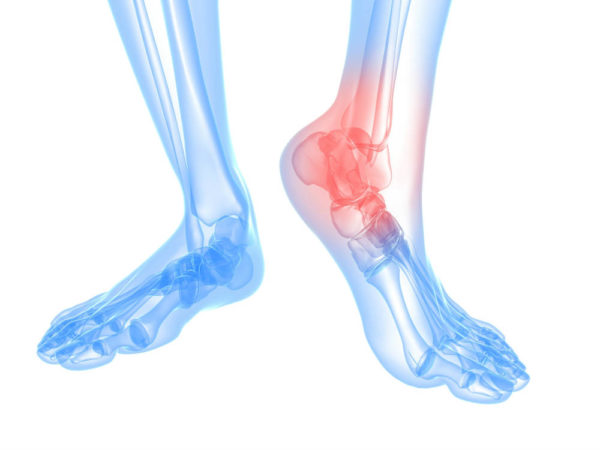Learn about rheumatoid
Rheumatoid is a chronic inflammatory disease that affects the joints and many other areas of the human body and causes many deformities and infections, and this occurs as a result of many factors that individuals must be aware of to know how to deal with this disease, so let’s read the following article to raise awareness of a lot of information on this topic.
Rheumatoid arthritis is one of the immune diseases that affect individuals as a result of the occurrence of some infections in the joints, and this occurs as a result of the infection of the synovial fluid that surrounds the joint with some infections that lead to a doubling of its thickness, which destroys the bones and cartilage associated with the joint in general and the small ones in particular, and this causes erosion in the joint, which causes its distortion, in addition to the accompanying many pains due to the increased friction of the bones with each other.
Rheumatoid disease
Rheumatoid disease causes many infections that are accompanied by severe swelling and result in a lot of pain, and this occurs as a result of the immune system attacking the joint tissues in each of the hand, foot, wrist, elbow, and knee, and this is accompanied by many other symptoms such as experiencing severe difficulty in movement and causing the deformation of the joints, and the matter is not limited to these organs only, but may also go towards the lung, heart, skin, and eyes.
The normal rheumatoid ratio
The normal rate of rheumatoid arthritis in the body is less than 14 international units/ml, and the result is considered negative in that case. If the rheumatoid rate is equal to 14 international units/ml or higher, then in that case the result is considered positive, very high, and outside the normal range.
How to determine the extent of active rheumatoid arthritis
Articular rheumatoid disease falls under three levels: simple rheumatoid, moderate rheumatoid, and severe rheumatoid, which is the last stage of this disease and is difficult to control, and the severity of the disease can be determined through some signs, for example:
- Determine the number of joints that are swollen or causing pain for an individual.
- Conducting analyzes to know the extent of the increase in inflammatory markers by observing the sedimentation rate and C-reactive protein.
- Taking a blood sample from the affected person to determine the rates of rheumatoid coefficient and anti-citrullinated peptides.
- X-rays of the affected areas and observation of infections.
Articular rheumatoid
Articular rheumatoid arthritis causes severe infections that affect many places in the human body, especially the joints that are responsible for movement, and affect them clearly and noticeably, and the effect is not limited to the joints only, but also includes many areas outside them, and the results of that are very dangerous.
Rheumatoid symptoms
The symptoms of rheumatoid arthritis differ from one person to another according to its severity and the extent of its effect on the individual’s body, and in most cases, it is difficult to separate its symptoms from the regular flu because of the similarity between them in feeling tired, high body temperature and weight loss, and among the most common symptoms of rheumatoid:
- Feeling severe pain in the joints, accompanied by fever and noticeable tumors.
- Noticing joint stiffness when a person has been in a state of rest for a long time or even when they wake up and find it difficult to move for a while.
- Feeling very exhausted and tired without making any effort.
- Suffering from shortness of breath.
- Bones become brittle and less durable.
Rheumatoid symptoms are often observed in the small joints of the fingers and toes in parallel and rarely begin to spread until it reaches other areas such as the joints of each of the wrist, knee, ankle, elbow, pelvis, and shoulder.
What is the difference between rheumatism and rheumatoid?
There are many differences between both rheumatism and rheumatoid, which we will highlight to become more able to distinguish between them.
The definition
- Rheumatism: It is not classified as a medical term, but it is circulated among individuals to describe some other symptoms that are very similar to arthritis.
- Rheumatoid: It is one of the types of inflammatory autoimmune disease, where the immune system attacks some tissues in the human body in addition to many other parts, and this causes severe tumors in the joints and a change in their general shape.
Symptoms
- Rheumatism
- feeling pain
- suffering from sclerosis.
- severe swelling
- muscle twitching
- Joint movement is significantly affected.
- The appearance of bony bumps.
- Rheumatoid
- The pain is associated with swelling in one or more specific areas.
- Feeling weak and tired all the time.
- Suffering from stiffness immediately after waking up for some time.
- Severe swelling and inflammation in the joints.
- A temperature rise.
- Rheumatic bumps.
- Lose weight.
Place of injury
- Rheumatism: It is located mostly at the bottom of the thumb and the joints of the fingers, in addition to the fact that its effect includes only one side of the body, and the individual begins to improve and loosen sclerosis as soon as he performs any activities.
- Rheumatoid: Rheumatoid inflammation is concentrated in the middle and lower joints of the fingers and affects both sides of the body at the same time, and until the resulting pain subsides, it takes at least an hour.
Age group
- Rheumatism: It affects people with age, but its development may start early, from the age of 18 to 64 years, and it affects women at a greater rate than men, especially when they reach the age of fifty.
- Rheumatoid arthritis: It mostly affects children, but it can also occur at any stage, especially in middle age.
Treatment
Rheumatism: It is not possible to find a suitable treatment directly for it, but some habits can be followed to prevent its further development, and here are examples of them.
- If you gain weight, it is better to start losing it immediately.
- Regular exercise.
- Use some equipment that relieves pressure on the joints.
- Take pain relievers.
- Commitment to physical therapy.
Rheumatoid
- Some injections are taken that prevent chemicals in the blood from sending signals to the immune system to attack the joints.
- Disease-modifying antirheumatic drugs-DMARDs.
- Biological drugs such as infliximab and etanercept.
Diagnostic method
Rheumatism
- Confirming the symptoms that afflict the patient by looking at the medical history.
- Exposing the individual to X-rays to detect changes in the joint.
- Detection of changes that occurred within the joint through magnetic resonance imaging.
Rheumatoid
- Consider the patient’s medical history.
- X-ray imaging of joints.
- Taking samples of joint fluid.
- Taking a blood sample to detect infections. Antinuclear antibody-ANA, anti-cyclic citrullinated peptides-anti CCP, complete blood count, C-reactive protein, erythrocyte sedimentation rate-ESR, rheumatoid factor.
Contraindications for rheumatoid patients
When an individual realizes that he has a rheumatoid disease, he must be more careful in his diet to avoid any complications of the disease that may affect him negatively and cause him many problems that he may not be able to solve, and he must also eat certain foods of high nutritional value here. Some prohibitions that he must eliminate because of their effect on stimulating inflammation and weight gain.
What is the forbidden food for rheumatoid patients?
- Grilled and fried meat: Eating each of them contributes to raising the level of the final products of the process of linking sugar to protein or the fatty part of the blood, and this greatly stimulates inflammation and increases the activity of symptoms.
- Omega-6 fatty acids: In addition to increasing inflammation, they also significantly increase weight, for example, corn oil, sunflower oil, soybeans, and some foods such as crackers, cakes, and biscuits.
- Foods rich in sugar: such as pastries, drinks, juices, and carbonated water, as they contribute to increasing the secretion of cytokines that increase inflammation and cause obesity in the individual.
- Hydrogenated oils: because they contribute to an increase in bad cholesterol and increase inflammation, an example of which is industrial obesity and fried foods in restaurants.
- Monosodium glutamate (MSG): It improves the flavors of foods and is more known in Asian cuisine, in addition to its presence in most meals available in the market, and it is included on the labels, so it is easy to infer its presence.
- White wheat products: An example of this is pasta and bread, and the harm in them is due to the presence of gluten protein, which stimulates inflammation.
- Tomatoes: they contribute to raising the level of uric acid in the blood, which is dangerous in the case of suffering from gout, which is a type of arthritis that is found in specific areas of the body, such as the joints of the fingers and toes.
As we have referred to some foods that are prohibited for rheumatoid patients, there are many foods recommended by doctors because they work to calm inflammation significantly, and here is what should be available in the diet of a rheumatoid patient:
- Omega-3 fatty acids: are widely found in tuna, salmon, and mackerel, and their importance is because they contain a large percentage of vitamin D, as they work in unions with omega-3 acids to calm symptoms and reduce inflammation.
- Dark vegetables: such as spinach and broccoli play a major role in reducing inflammation, in addition to vitamin C, which contributes to the production of collagen, which works to form cartilage.
- Nuts: they contain fiber, calcium, zinc, magnesium, and omega-3 fatty acids, and they not only reduce inflammation, but also positively affect heart health, for example, walnuts, almonds, and peanuts.
- Berries: There are many types of fruits that calm inflammation and are antioxidants, but the utmost importance of berries, in this case, is due to their superior and multiplier effect in fighting infections than others because it contains a large amount of anthocyanin.
- Garlic and onions: each of them contains a chemical that is very effective in reducing inflammation and contributes to relieving joint pain in rheumatic patients significantly.
- Olive oil and canola: Contain equal proportions of both omega-3 and omega-6 acids, in addition to the fact that olive oil contains oleocanthal, which reduces inflammation and stimulates heart health.
- Ginger and Turmeric: Both contain very beneficial chemicals that soothe inflammation and reduce pain.
Does vitamin D deficiency cause rheumatoid disease?
Vitamin D has many positive effects on the functions of both bones and muscles, in addition to its great effectiveness in calming joint inflammation. Many studies have been conducted that have proven that there is a link between vitamin D deficiency and rheumatoid disease.
Where many people were subjected to the experiment and it was concluded that people with rheumatoid disease suffer from a significant deficiency in vitamin D than the rest of the healthy people, so it was confirmed that the deficiency of vitamin D in the body of the individual has a very large factor in rheumatoid infection.
Nowadays, this can be compensated by taking nutritional supplements that contain vitamin D to avoid exposure to many other risks. People who suffer from rheumatoid arthritis are more susceptible to osteoporosis and fractures, and the severity of pain increases.
Rheumatoid treatment
The faster receiving rheumatoid treatment without ignoring the individual, he will be able to avoid many other bad complications such as deformities in the joints and many others, so the patient should present himself to a doctor and start receiving appropriate treatment to treat rheumatoid disease according to Recipe.
The individual must be aware that there is no definitive treatment for rheumatoid arthritis, but the earlier he is aware of the disease and deals with it, the easier it is for him to know how to deal with it and change the wrong lifestyle for prevention, and there are different methods that the doctor may prescribe to you to deal with rheumatoid, and here are some of them:
Medication treatment for rheumatoid arthritis
There are many medications that the specialist doctor prescribes to alleviate the symptoms of rheumatoid arthritis, such as:
- Disease-modifying anti-rheumatic drugs, such as methotrexate and leflunomide.
- Biological treatments.
- Enzyme inhibitors such as JAK inhibitors.
- Painkillers.
- Steroidal or non-steroidal anti-inflammatory drugs.
Treatment of rheumatoid arthritis with adjunctive therapies
- Physiotherapy: The use of a physiotherapist is very important because it helps the patient improve his physical fitness and muscle strength, and the joints become more flexible.
- Occupational Therapy: The occupational therapist raises the patient’s awareness about the exercises that he can do to protect his joints in any place.
Surgical treatment of rheumatoid arthritis
Although some individuals adhere to the medications prescribed by the doctor and follow healthy lifestyle habits, in some cases things may worsen and reach the need for surgical intervention, and this is to increase the individual’s ability to move his joints without feeling severe pain all the time or to treat some deformities in other cases, for example:
- Arthroscopy.
- Hand, finger, and joint surgeries.
- Joint replacement surgery.
Herbal treatment of rheumatoid
Some herbs may be involved in the treatment of rheumatoid arthritis, and we will learn about some of them in the following lines:
- Ginger: It is included in the herbal recipes that are prepared for the treatment of rheumatoid arthritis, because of its many benefits in soothing rheumatoid arthritis, arthritis, joint and muscle pain, and preventing bone fragmentation.
- Green tea: It works to greatly calm inflammation because it contains large amounts of antioxidants, and there are many ways in which it can be taken, such as drinking it as a tea drink, matcha powder, or putting it on food, in addition to providing capsules for green tea in pharmacies at present.
- Turmeric: It is one of the most popular herbs used in the treatment of rheumatoid arthritis, as it contains curcumin, which reduces inflammation, in addition to preventing the stimulation of some enzymes and cytokines that lead to inflammation.
- Aloe vera: It contains many beneficial properties that calm inflammation, in addition to its availability in many forms such as capsules, powder, and gel. However, diabetics should be careful when taking capsules, as they significantly reduce the level of sugar in the blood.
- Cinnamon: Many studies have been conducted on people with rheumatoid arthritis, and it has been concluded that taking four capsules containing 500 milligrams of cinnamon powder daily for eight weeks has reduced levels of CPR (reactive protein), which means that the severity of the disease reaction was significantly reduced.
- Cat’s claw herb: It has a very effective role in calming joint inflammation and enhancing immunity. It is obtained from the bark and root of a tropical plant that grows in South and Central America, but it causes some side effects such as nausea, dizziness, low blood pressure, or headache.
- Indian frankincense: It is also known as frankincense, and it is obtained from the gum of Boswellia trees native to India and has an effective role in calming infections, but care must be taken to take only 1 gram of it daily, because a large amount of it negatively affects the liver, in addition to its availability in the form of capsules and creams.
Is rheumatoid a serious disease?
Rheumatoid disease is not dangerous to the extent that it may cause death, but it is dangerous in that it may cause many other problems that may be difficult to deal with over time, in addition to being a major cause of osteoporosis and an increase in the rate of fragmentation and fracture.
It is also one of the diseases that can be coexisted largely, but you must be more attentive to the doctor’s instructions and not violate any of them, and with time you will find that the severity of the pain decreases, and the earlier you detect this disease, you will find it easier to deal with it and reduce its complications.
Rheumatoid causes
People are exposed to rheumatoid disease as a result of the immune system attacking healthy body cells, meaning that there are no direct reasons to know how this happens, but there are some factors that increase the incidence of this disease and for example:
- Genetic factors: When an individual is born, some genes may be present in his body that have a major factor in rheumatoid diseases, such as genes related to the human leukocyte antigen (Human Leukocyte Antigen), and the disease begins to be active when carriers of these genes are exposed to some external factors such as smoking.
- Old age: Although rheumatoid arthritis may affect an individual of any age, advanced age increases the incidence of it.
- Gender: Women are three times more likely to develop the rheumatoid disease than men, but those who breastfeed their children have a very slight infection rate, according to many studies.
- Smoking: Based on many studies, smoking not only causes rheumatoid disease but also makes dealing with it much more difficult.
- Obesity: People who are overweight are at a high risk of rheumatoid arthritis, and that is why you should be very careful about that.

